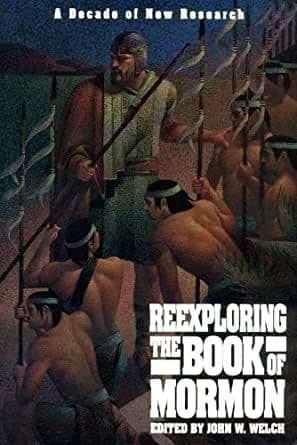Book
85 Chapters

1 Nephi 16:28 “I, Nephi, beheld the pointers which were in the ball.”
Why was Laman apparently of the opinion that his younger brother Nephi had made the Liahona? Nephi and Alma expressed the view that the Liahona was “prepared . . . by the hand of the Lord” (1 Nephi 18:12; 2 Nephi 5:12; Alma 37:38-39). However, shortly after the appearance of the Liahona at the door of Lehi’s tent, Laman began complaining that Nephi “worketh many things by his cunning arts, that he may deceive our eyes, thinking, perhaps, that he may lead us away into some strange wilderness” (2 Nephi 16:3-8). After all, whenever fine workmanship and metallurgy had to be done, Nephi was the one who did it (1 Nephi 17:10-11, 16; 19:1; 2 Nephi 5:15-16). What does the study of ancient metallurgy tell us about the setting of Laman and Lemuel’s point of view that Nephi made the Liahona?
According to the Book of Mormon, the word Liahona meant specifically “compass” (Alma 37:38), though it was also called a “ball” or “director”—based apparently upon its round form and its guiding function on both land and sea (1 Nephi 16:10, 16; 18:21; Mosiah 1:16; Alma 37:45). While the Book of Mormon does not tell us whether the Liahona functioned partly on geomagnetic principles, Nephi did say that it contained two spindles, one of which functioned as a directional pointer, and that the body was made of “fine brass” (1 Nephi 16:10, 28). Brass is an excellent noncorroding and nonmagnetic case for a compass. Those who are familiar with modern compasses might naturally ask whether the Liahona worked on a similar principle, with a magnetic function for one spindle, and a possible azimuth setting for the other. Perhaps part of Laman’s skepticism was based on some familiarity with just such a technology.
But what sort of “cunning artifice” did Laman imagine Nephi employed in order to transmit divine messages to the surface of the ball-shaped Liahona (1 Nephi 16:26-29)? Moreover, as Laman and Lemuel later learned to their dismay, the Liahona functioned or failed based directly upon the faith, heed, and diligence given to it and to the Lord (1 Nephi 16:28-29; Mosiah 1:16; Alma 37:40-41, 44-45), all of which is very reminiscent of the mode in which the Nephite interpreters-directors-Urim and Thummim functioned best (Mosiah 8:13; Alma 37:23; D&C 9:7-9; 10:1-5; Joseph Smith—History 1:35).
Although we do not know specifically what Laman had in mind, it is worth noting that the function of magnetic hematite was well understood in both the Old and New Worlds before Lehi left Jerusalem. Magnetite, or lodestone, is, of course, naturally magnetic iron (Fe3O4), and the word magnetite comes from the name of a place in which it was mined in Asia Minor by at least the seventh century B.C., namely Magnesia.1 Parenthetically, Professor Michael Coe of Yale University, a top authority on ancient Mesoamerica, has suggested that the Olmecs of Veracruz, Mexico, were using magnetite compasses already in the second millennium B.C. This is based on Coe’s discovery during excavations at San Lorenzo-Tenochtitlán of a magnetite “pointer” which appeared to have been “machined,” and which Coe placed on a cork mat in a bowl of water in a successful test of its function as a true floater-compass.2 The Olmecs (Jaredites?) of San Lorenzo and their relatives in the Oaxaca Valley were utilizing natural iron ore outcroppings by the Early Formative period (c. 1475-1125 B.C.), and at the end of the San Lorenzo phase and in the Nacaste phase (c. 1200-840 B.C.). Mirrors and other items were also fashioned from this native magnetite (and ilmenite).3
Whatever the nature of the Liahona, it is intriguing to note that certain properties of compasses might have been familiar to those who were blessed with its guiding functions, and that those who were skeptical of Nephi and the Liahona might have logically turned to those characteristics in seeking to find a plausible rationalization.4
This Update was based on research by Robert F. Smith, March 1984. Nephi’s great familiarity with metals was also explored by John A. Tvedtnes, in his paper “Was Lehi a Caravaneer?” (Provo: F.A.R.M.S., 1984), which argues against the suggestion made long ago by Hugh Nibley that Lehi was a merchant and presents evidence instead for the idea that Lehi was a skilled metallurgist and craftsman.
1. Thales of Miletus is the first known to have mentioned its strange properties, c. 600 B.C.
2. J. B. Carlson, “Lodestone Compass: Chinese or Olmec Primacy?” Science 189 (September 5, 1975): 753-60; R. H. Fuson, “The Orientation of Mayan Ceremonial Centers,” Annals of the Association of American Geographers 59 (September 1969): 508-10; E. C. Baity, “Archaeoastronomy and Ethnoastronomy So Far,” Current Anthropology 14 (October 1973): 443.
3. Kent V. Flannery and J. Schoenwetter, “Climate and Man in Formative Oaxaca,” Archeology23 (April 1970): 149; see also Kent Flannery, ed., The Early Mesoamerican Village (New York: Academic Press, 1976), 318.
4. For views of the Liahona that consider its possible nonmagnetic functions, see Hugh Nibley,”The Liahona’s Cousins,” reprinted in Since Cumorah, in The Collected Works of Hugh Nibley (Salt Lake City: Deseret Book and F.A.R.M.S., 1988), 7:251-63; and Gordon C. Thomasson, “Mosiah: The Complex Symbolism and the Symbolic Complex of Kingship in the Book of Mormon” (Provo: F.A.R.M.S., 1982).
Book
85 Chapters
Items in the BMC Archive are made publicly available for non-commercial, private use. Inclusion within the BMC Archive does not imply endorsement. Items do not represent the official views of The Church of Jesus Christ of Latter-day Saints or of Book of Mormon Central.